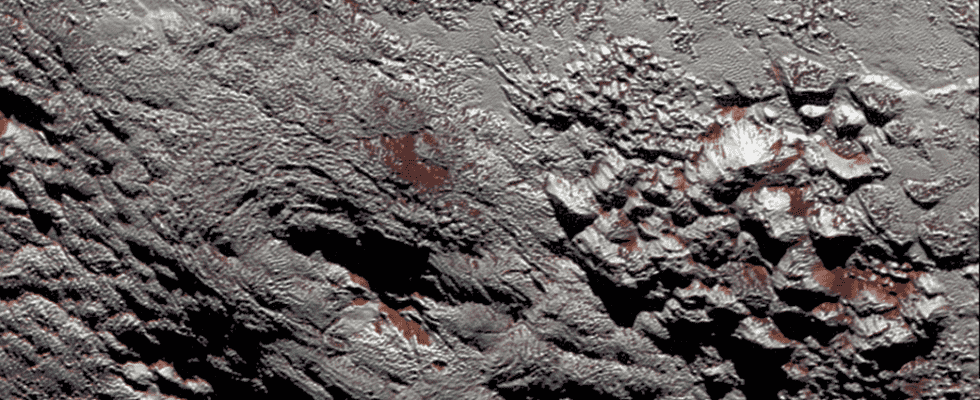The dwarf planet Pluto, as has been known since the visit of NASA’s New Horizons probe in July 2015, is by no means just a boring ball of ice in the outer solar system. Now there is even direct evidence of recently active volcanoes on the icy celestial body, reports a working group in the journal Nature Communications. As the team led by Kelsi Singer from the Southwest Research Institute writes, several pieces of evidence support this conclusion. The surface forms and the composition of the areas called Wright Mons and Piccard Mons therefore indicated cryovolcanism. There seem to be many volcanic peaks, some up to seven kilometers tall and 10 to 150 kilometers across.
There is a surprising amount going on on the dwarf planet Pluto
Pluto, the largest object in the Kuiper Belt, presented itself as a surprisingly dynamic celestial body in the New Horizons images. Experts were particularly impressed by the fact that the surface structures of the dwarf planet are more complex than one would have thought possible. Even then, this raised the question of whether there were or still are volcanoes on Pluto. In the new publication, the experts around Singer give a first preliminary answer: Yes, there are indications of volcanic activity on the dwarf planet.
Of course, you shouldn’t think of Pluto as a fire-breathing dwarf. Instead, there is said to have been cryovolcanism there, in other words: ice volcanoes. Such volcanoes do not release hot magma and lava, but a viscous mixture of water ice. The asteroid Ceres in the asteroid belt has ice volcanoes to offer, and the south pole of Saturn’s moon Enceladus is also said to be cryovolcanically active. There, water shoots into space in fountains.
New Horizons spacecraft discovered evidence of cryovolcanism
The New Horizons probe’s visit in 2015 was too brief to observe such volcanism directly. But from their measurements and recordings, researchers conclude that cryovolcanism should have existed in at least one region on Pluto up to a few hundred million years ago. More specifically, it is a hilly area southwest of the Sputnik Planitia ice glacier with the Wright Mons and Piccard Mons surface formations.
